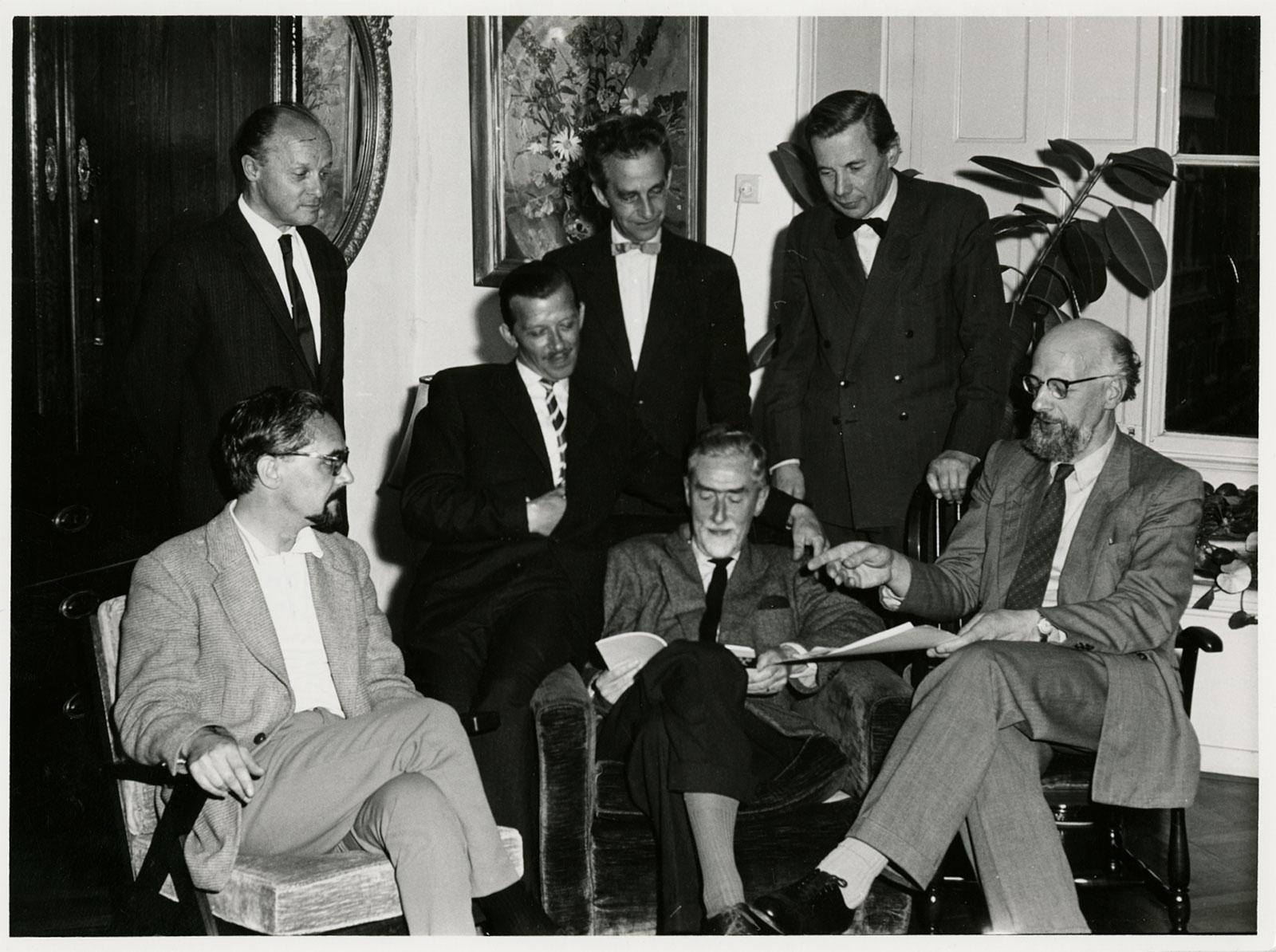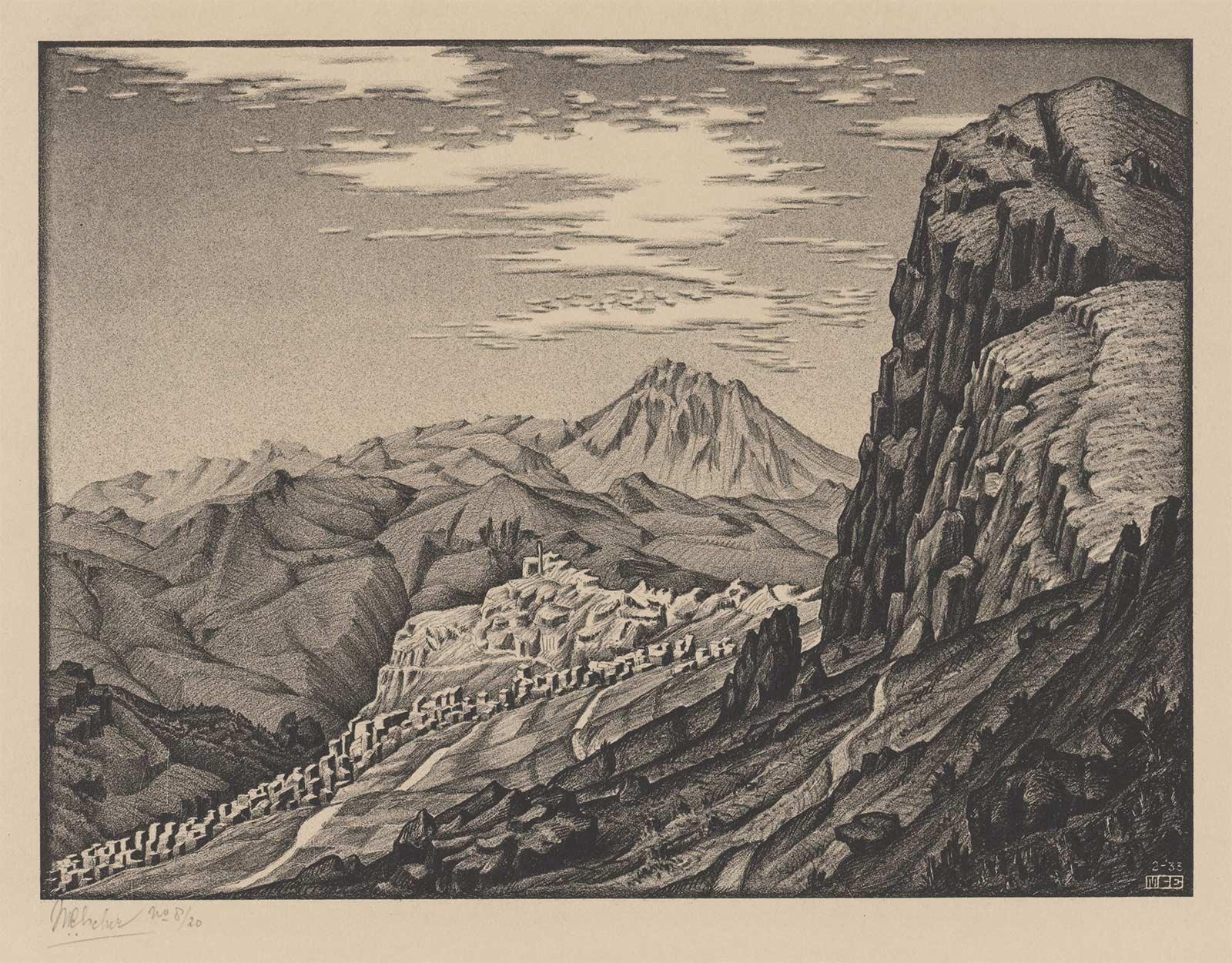

On 20 February 1941 Maurits and Jetta moved with their three children to Nicolaas Beetslaan in Baarn. The couple had been living abroad since 1925. The first years in Rome, where George and Arnold were born. In the summer of 1935 they moved to the Swiss town Château-d’Oex and in 1937 they moved again, this time to Ukkel, a suburb of Brussels. In 1938 Son number three, Jan, was born there in 1938. After a more or less forced departure from Rome due to the rise of fascism and the health of his sons, and escape from the cold and the isolation in Switzerland, Ukkel seemed like a safe haven. But the arrival of the war and the death of his parents in 1939 and 1940 respectively forced Escher to reconsider his situation. After the German invasion of the Netherlands and Belgium in May 1940, it felt logic to return to his native country. The artist Otto B. de Kat and his wife, poet Joanna van Zijl, close friend to Maurits and Jetta, had already moved to the Dutch town of Overveen. Furthermore, Escher’s inheritance from his parents mainly consisted of Dutch property and the family had to live on part of the rental income. Financial traffic from the Netherlands to Belgium was nearly impossible.*
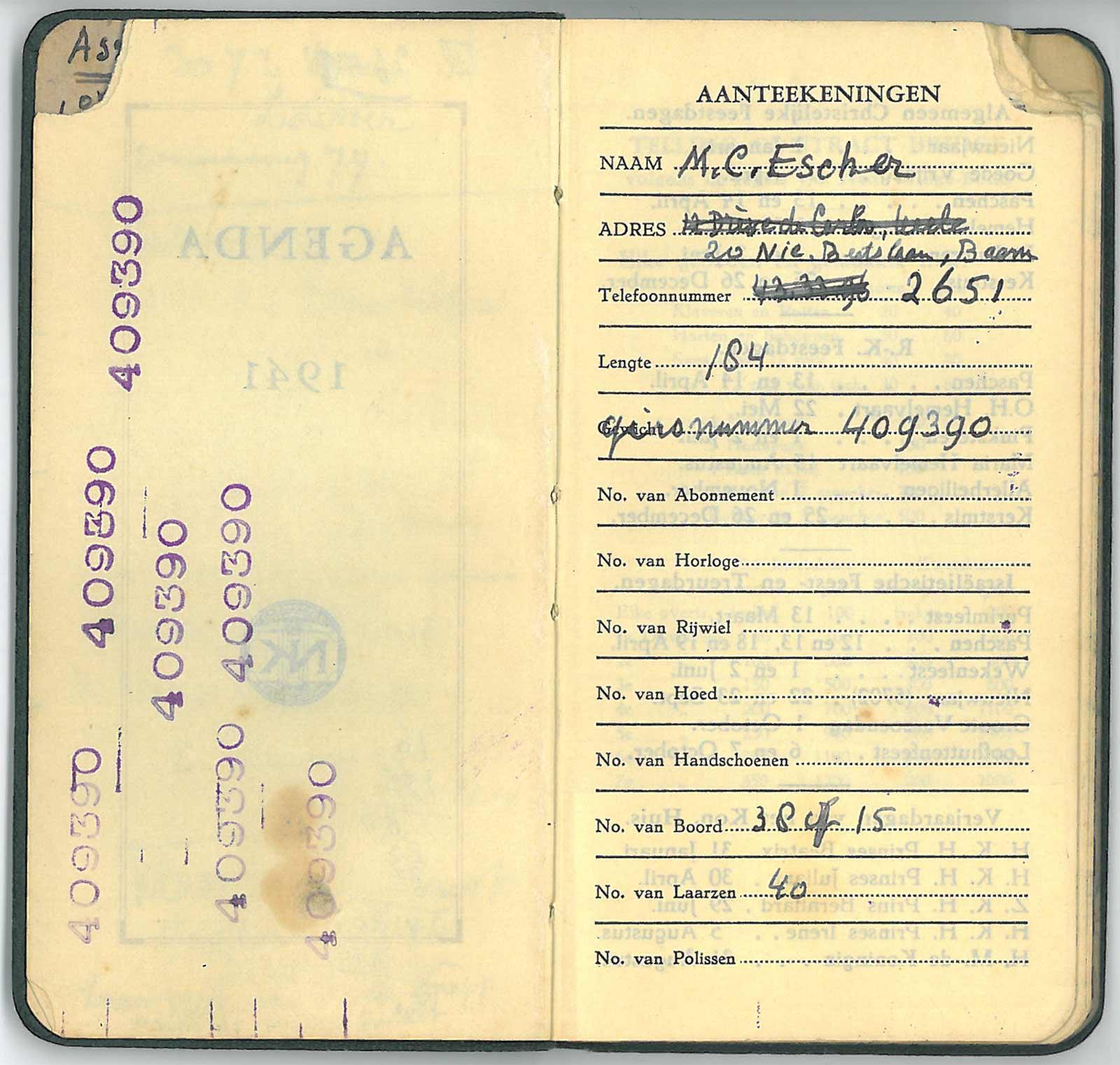
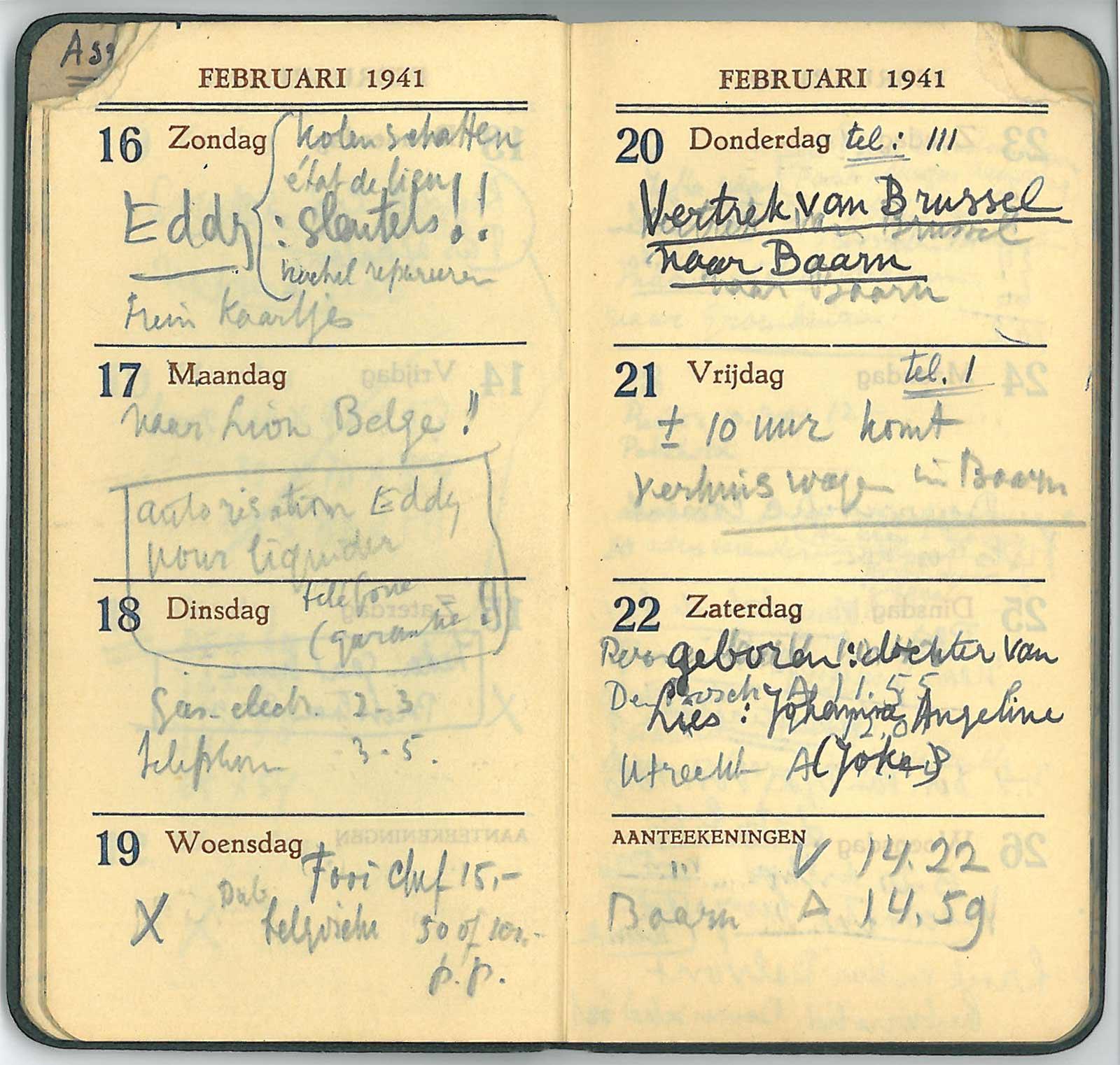
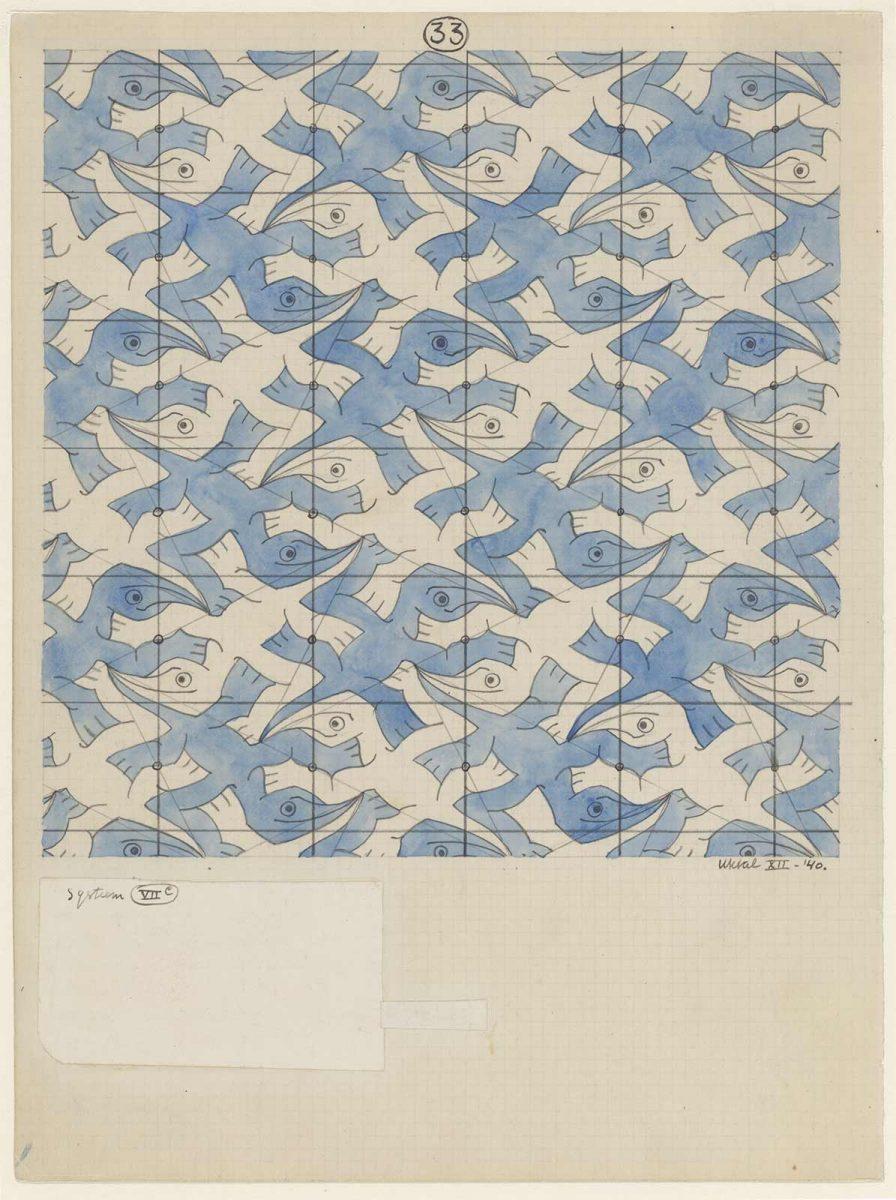
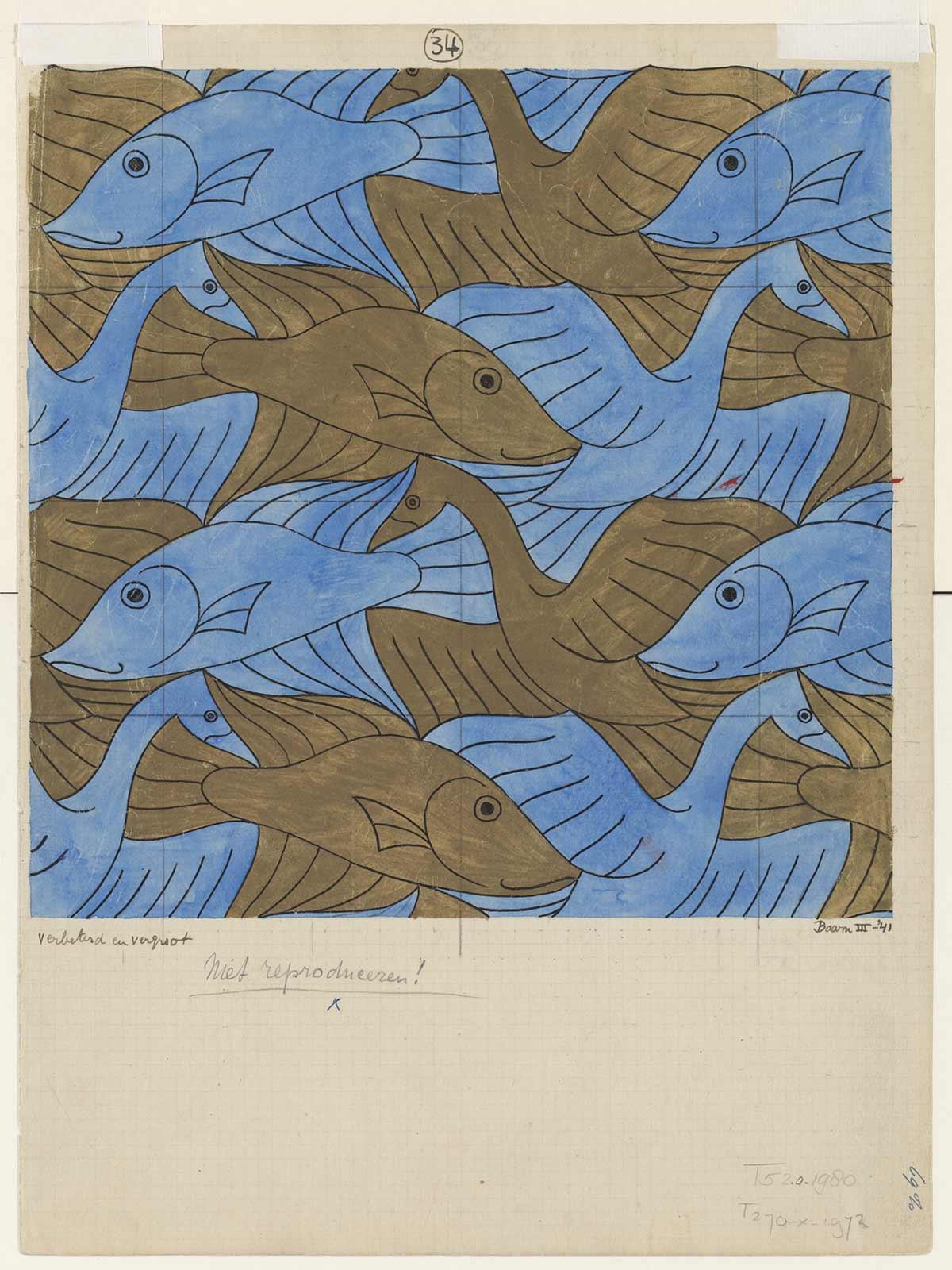
During the first few months of German occupation and Escher’s final months in Brussels, Escher produced only one print, an ex libris for his friend Hein ’s Gravezande in December 1940. It is possible there is another one, a ‘vanished’ print. According to Escher’s diary, he started ‘Sleutels’ (‘Keys’) on 4 November 1940 and completed it on 8 November. No print of that name is known in his oeuvre. He did, however, complete an assignment for wooden panels in the city hall in Leiden during this period, and it could be that the keys allude to one of those designs. After all, Leiden’s coat of arms features two keys and the city map that Escher designed contains keys. In that period he also produced only one drawing in his notebook full of tessellations: Regular Division of the Plane no. 33. Once in Baarn he resumed work. First with a regular division (no. 34), of which the motif also features in the designs for Leiden. In the summer of 1941, he produced 10 new tessellations featuring snakes, beetles, fish, birds and other animals.
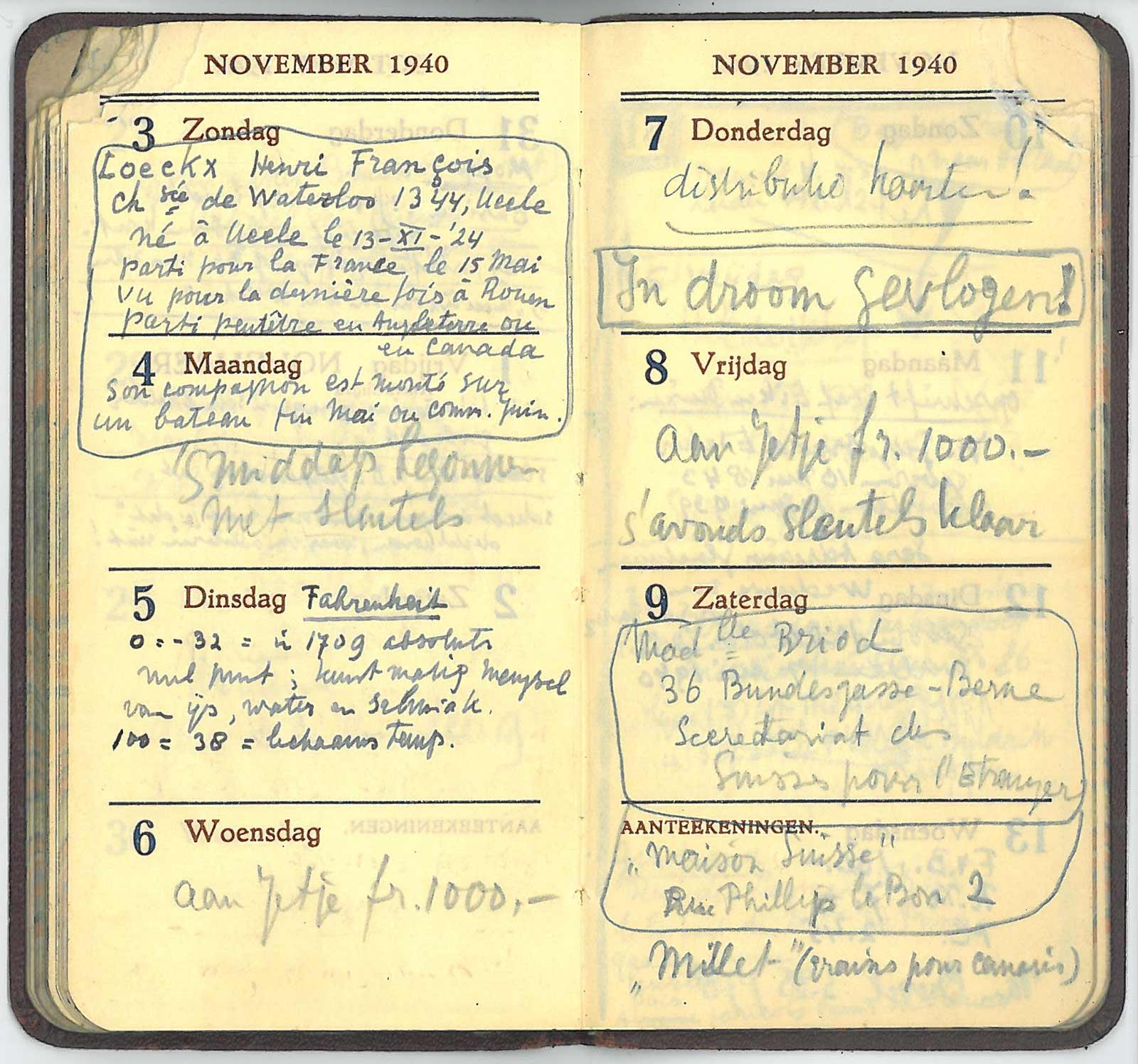
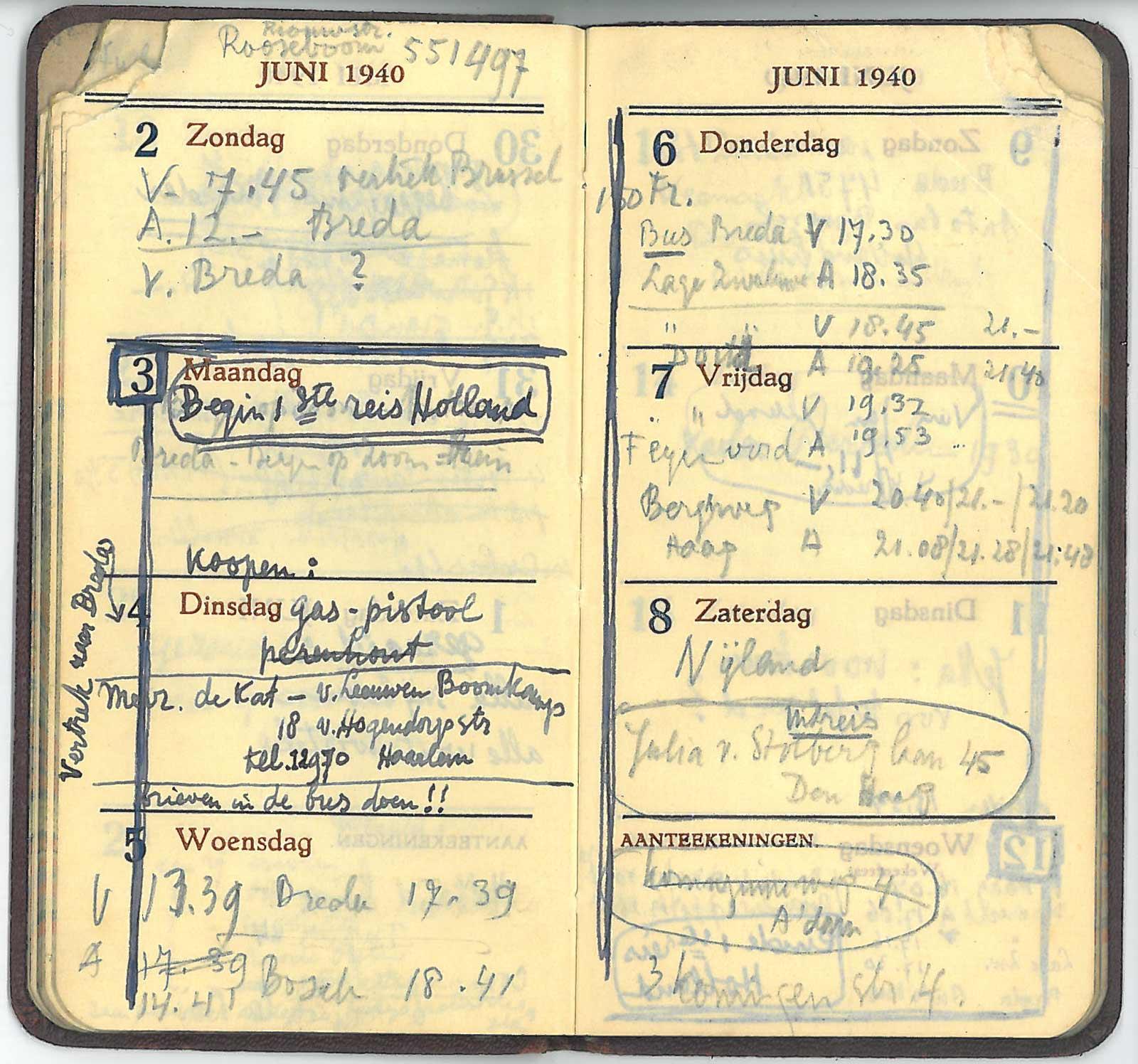
Between June 1940 and February 1941, Escher traveled to the Netherland six times to make preparations for the move. In the meantime, George and Arthur had to go to a Dutch-speaking school in Brussels in the winter of 1940 to learn Dutch.* Baarn was chosen as their new home town, almost exclusively because of the good reputation of the Baarnsch Lyceum. Nigh on 30 years later Escher would produce a tile design for that lyceum, where his sons had been taught.
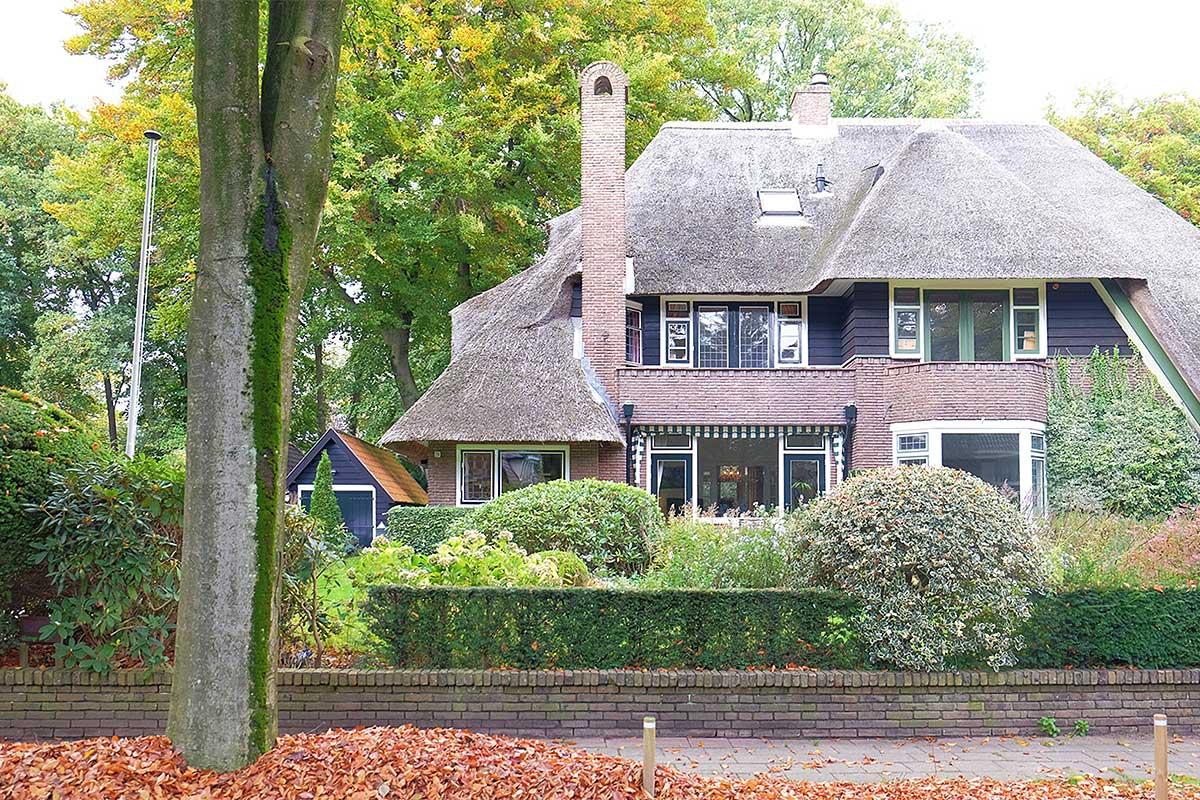
After the many relocations (Escher had also moved house in Rome and Ukkel too), Baarn became Escher’s permanent residence. He stayed there until his departure to the Rosa Spier Huis in Laren in August 1970. Escher had rented half of a double thatched cottage on Nicolaas Beetslaan. From the house, at number 20, it was only a five-minute walk to the Baarnsch Lyceum, to the station or to the town centre. Escher set up his studio in the rear part of the garage, which sported a large window that spanned almost the entire width of the back wall. Escher moved house several times in Baarn too. In December 1943 the house on Nicolaas Beetslaan was confiscated by the Germans and the family had to look for something else again. In the end, in 1954, Escher would have a house built at Van Heemstralaan 28, where he continued to live until 1970.
In this video (in Dutch) Escher biographer Wim Hazeu talks about the move to Baarn, the house on Nicolaas Beetslaan, the move forced by the Germans and the contacts Escher established in Baarn during those years.
Allow cookies
You need to change your cookie preferences to view the following content.
Source
[*] Wim Hazeu, M.C. Escher, Een biografie, Meulenhoff, 1998, page 269
More Escher today

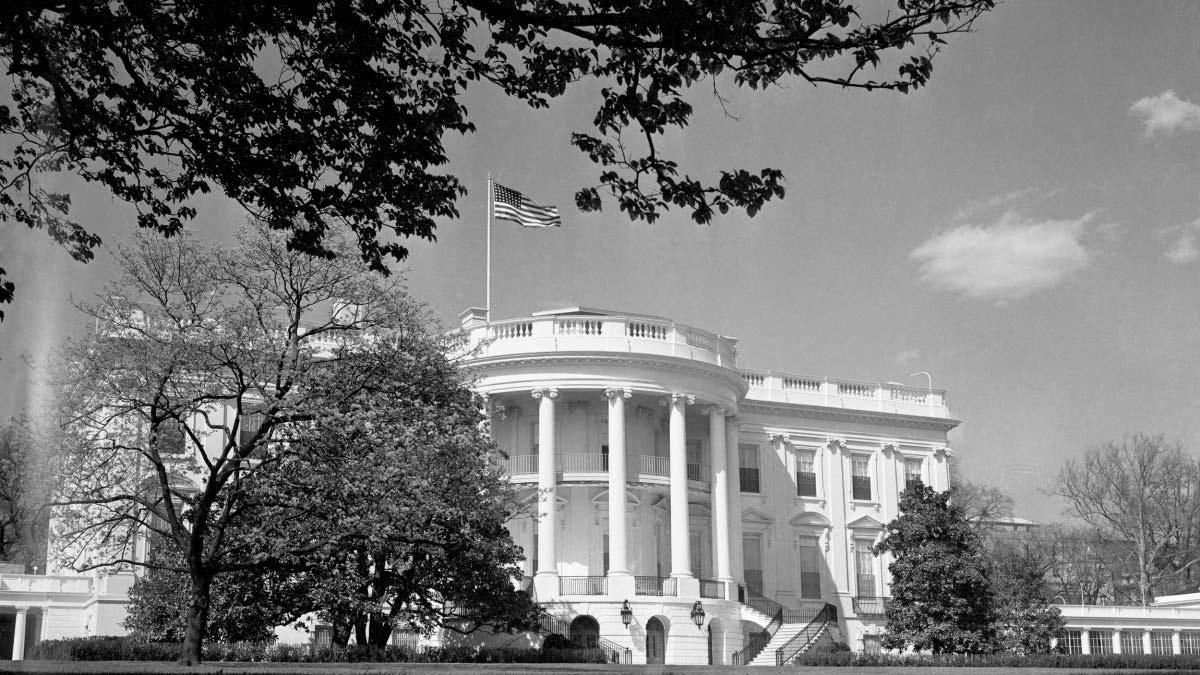
The White House
